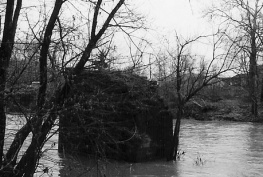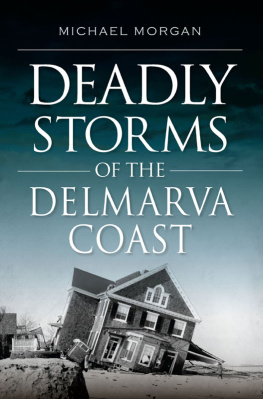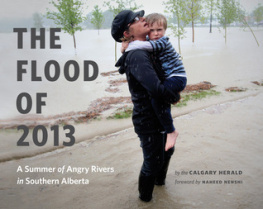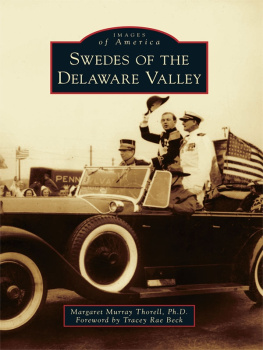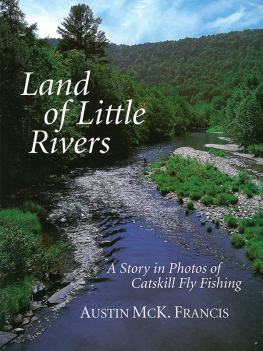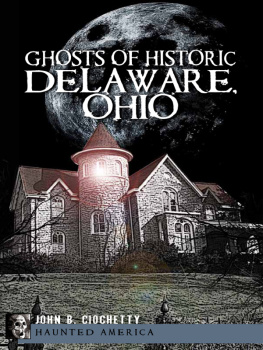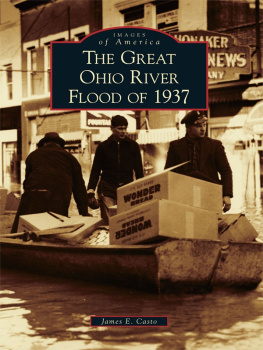by Mary A. Shafer
NOTES
In the interest of making this a most readable book, the usual rigid format of footnoting was abandoned in favor of this less formal but equally functional Notes section. It is divided by chapter and page number for ease of use. Notes are not exhaustiveentries were made only for topics deemed of likely importance to the average reader. To keep this section concise, source entries are brief and may be referenced to fully expanded citations in the Bibliography. Those sources referenced with a single citation are fully noted here.
Common Abbreviations:
NOAA National Oceanic and Atmospheric Administration
NWS National Weather Service, formerly U.S. Weather Bureau
USGS United States Geological Survey
SECTION I THE CALM
Chapter 1 Between a War and a Hard Place
Friday dawns red: Various weather records and newspaper accounts
The newly robust automobile industry: On This Day In History, History.com; dMarie Time Capsule website.
Chapter 2 Connie
His own recollections notwithstanding: The full story of Isaac Monroe Cline and the tragedy of the 1900 Galveston hurricane is masterfully told in Erik Larsens Isaacs Storm.
Surface waters were measuring: Weather and Circulation of August 1955.
February and March, 1955 had seen a surplus of precipitation: Philadelphia Area Historic Weather Data, Franklin Institute.
The first intentional flight into a hurricane: The First Flight Into A Hurricanes Eye.
Rainfall, wind and damage figures: from The New Jersey Weather Book, The Philadelphia Area Weather Book, The World Almanac and Book of Facts 2001, the Weather Bureaus Technical Paper No. 26, and various newspaper accounts.
Unofficial estimates: Philadelphia Inquirer articles, 8/14/1955, pages 1+.
A High Point couple: Philadelphia Inquirer article, 8/14/1955, page 1.
With the storm past: Philadelphia Inquirer article, 8/14/1955.
Connie threatens: Inside Line, Line Material Company newsletter, 10/1955.
At her peak: Hurricane Connie. USA Today, Chris Capella, 6/9/1999.
Chapter 3 The Delaware: Cutting A Swath Through History
The Delaware is one of the older rivers on our continent: The Geological Story of Pennsylvania
Fast-forward to just over 20,000 years ago. Website of the Ontario Archaeological Society. The Archaeology of Ontario: Post-Ice Age Geography and the Environment.
http://www.ontarioarchaeology.on.ca/oas/summary/post.htm
By the time Europeans arrived: Delaware Diary.
Six events with an average interval: Great Floods of Pennsylvania.
In stark contrast: Tennessee Emergency Management Agency website
http://www.tnema.org/Archives/EMHistory/TNCDHistory1.htm
The novel concept of the planned community: Levittown, Pennsylvania: Building the Suburban Dream website
a matter of insufficient technology: The Meteorologist In Your Life.
The free bridges on the Delaware: Telephone interview with John Salaga, Delaware River Joint Toll Bridge Commission
Chapter 4 Diane, The Jealous Sister
While both hurricanes make landfall: Diane was at Category 3 intensity only as she crossed over Cape Fear, North Carolina. At final landfall, her winds had dropped into Category 2 range. NOAA Technical Memorandum NWS TPC-1.
She has been absorbing it in abundance: An exhaustive recap of the meteorological factors contributing to the twin hurricanes development is discussed in The Weather and Circulation of August 1955.
Orographic enhancement: A full (though very technical) dissection of this and other related meteorological phenomena is contained in a NOAA research paper entitled The Distribution of Precipitation over the Northeast Accompanying Landfalling and Transitioning Tropical Cyclones. Clarification of terms was provided in an email from on-air meteorologist Ben Gelber.
The substantial rains from Connie: Reservoirs Not Full In Spite of Rain, article from August 17, 1955 edition of The Daily Record. Stroudsburg, Pa.
An inch of rain: Figures Explain Reasons Behind Flood In Monroe. Article from Easton Express. August, 1955. Easton, Pa.
Hydrologists have proven: Upper Mississippi Flooding. American Weather Service, Weatherbug.com website. http://www.aws.com/aws_2001/greatesthits/default.asp?CID=61
SECTION II THE STORM
Chapter 5 It Wasnt Supposed To Be This Way
This same issue of the newspaper: Area Awaits Heavy Rains, front page article from morning edition of The Daily Record, August 18, 1955. Stroudsburg, Pa.
But with other headlines: Tired Diane Puffs Way Into Virginia, front page article from morning edition of the Philadelphia Inquirer. Philadelphia, Pa, August 18, 1955.
In 1868 a small dam had been built: Flood: The Great Flood of 1955. Branchville website.
Uptown, farther from the brook: Neither Rain Nor Flood Nor Stopped This Wedding! Kathleen Cody Sengel. Barrett Township Historical Society Newsletter.
Just up the way in Greentown: The Flood. Carbondale Review. Carbondale, Pa. 1955.
The noisiest tributary of the Lackawanna: History of the Lackawanna Valley, Hollister.
Mechanics in the Erie yard are just finishing: Hurricane Diane, Gallagher.
About 150 yards across the road: An Eyewitness Account of the Flood. Bob Robacker.
Elliott and Ella Highfield: The Flood. Carbondale Review.
Such distinguished personages: Remembrance of Rivers Past, page 237. Ernest Schweibert. The Macmillan Company, New York. 1972.
Chapter 6 Hell In The Headwaters
In Canadensis, Dale Price is upset: Recollections of the Flood in 1955 in Canadensis. Dale Price. Barrett Township Historical Society Newsletter.
A heavy rain is falling: Various newspaper articles and weather reports.
His son works: Flash Flood Rips Carversville. New Hope Gazette. Aug. 25, 1955.
Little Robbie Winans: Email interview, R. Foster Winans.
Sandy Smith has made it home: Personal interview, Sandy Smith Armitage.
Lloyd Graff, committee member: Camp Pahaquarra Survives Flood. Hunterdon County Democrat. Aug. 25, 1955.
Only about a hundred yards upstream: Various newspaper articles (mostly from The Daily Record ) and railroad reports.

